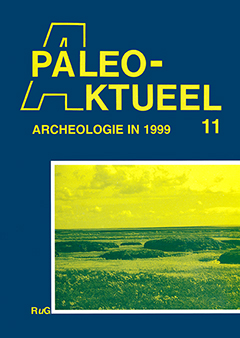DE FEDERMESSER-VINDPLAATS BIJ DOETINCHEM (GLD.): NATUURWETENSCHAPPELIJK ONDERZOEK
Samenvatting
New research concerning the Federmesser site at Doetinchem (Niekus et al., 1998) is summarized. A hearth was present here, as is evident from a red colaration of the soil; about 2 m west of it a dump with burnt bones and charcoal was present (without red coloration). The site is stratigraphically associated with a weakly developed palaeosoil: probably the Usselo Horizon. The small charcoal particles, mostly Pinus sylvestris, in addition to some Salix, are from wood that had been dead for same time before it was burnt. The identified charcoal particles derive not from the hearth but from the dump. The site produced many thousands of small, burnt bone fragments, clustered both in the hearth and in the dump. Some 40 fragments could be identified: Equus sp. (3), Alces alces (2), Alces or Cervus (5 antler fragments, worked?), Sus scrofa? (2), Lepus sp. (2), a large mammal (6, some with traces of working?), Esox lucius (5), Ciprinids (4), cf. Salmo (1), other fishes (10). Among the bones are elements ariginating from primary butchering, suggesting that the site was a hunting camp. Three radiocarbon dates are available: two from cremated bone and one from charcoal. The dates are very similar; the mean of the three dates is 10,893 BP. Given the presence of a large wiggle in the Lateglacial, the dates may indicate either the beginning or the end ofthe Allerød lnterstadial; however, the predominance of Pinus charcoal makes it probable that the site dates from the last part of the Allerød.

